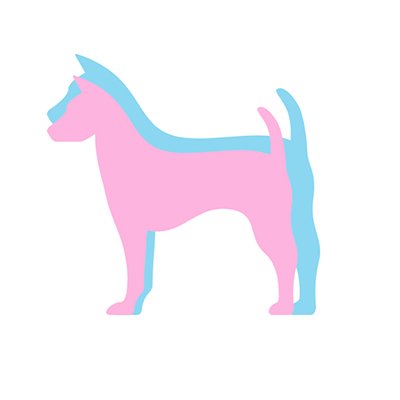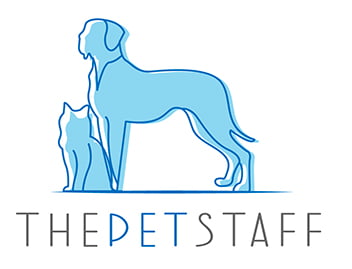Are you thinking about getting a Treeing Walker Coonhound? Owning a dog is not just a privilege but a responsibility. What things should you know before deciding if this dog breed is right for you and your family? These medium-sized friendly dogs are full of energy and power and require a lot of exercise, but they are loyal and well-mannered companions to those who have the energy to keep up with them. Below is everything you need to know about caring for a Treeing Walker Coonhound.
Breed Characteristics
Temperament | Friendly, intelligent, and confident |
Intelligence | High |
Affection/Friendliness | Affectionate and friendly |
Trainability | Moderately trainable |
Mental Stimulation | Requires mental stimulation |
Exercise Needs | High |
Apartment Living | Not ideal, needs space to roam and exercise |
Family Friendly | Very family-friendly, great with children |
Pet Friendly | Generally gets along well with other dogs, may have a prey drive towards smaller animals |
Drooling Level | Moderate to high |
Energy Level | High |
Loneliness Tolerance | Prefers company, can experience separation anxiety if left alone for long periods |
Adaptability | Can adapt to different environments with proper exercise and mental stimulation |
Tendency to bark | High |
Origins of the Treeing Walker Coonhound
The origins of the Treeing Walker Coonhound go back several hundred years. The Treeing Walker Coonhound descends from both English and American Foxhounds, which were used as hunting dogs. Therefore, Treeing Walker Coonhound was bred to be used as a hunting dog on small game.
This breed originated in the United States when a black and tan dog known as "Tennessee Lead" was crossed with a Walker Hound in the 19th century. The development of this breed began in the mid-1700s but didn't really begin to take shape until the 1800s.
Treeing Walker Coonhounds are valued for their hunting skills and work ethic. They were quick to follow a scent and then hold their prey at their tree until the hunters came, using their big voices to signal hunters where to go. These factors make them one of the more preferred coonhound breeds.
Originally included in the breed group name English Coonhound, the Treeing variety was recognized as a breed in its own right by the United Kennel Club in 1945. The American Kennel Club followed suit in 2012.

Breed Overview
Height: 22-27"
Weight: 50-70 lbs
Height: 20-25"
Weight: 50-70 lbs
Breed Group
Hound
Life Span
10-13 years
Coat
Short
Coat Length
Short
Hypoallergenic
No
Shedding Level
Moderate to high
Size
Treeing Walker Coonhounds are medium to large dogs. Females grow to be 20-25" tall, and males grow to 22-27" tall. They weigh between 50 and 70bs full grown.
Personality
Treeing Walker Coonhound dogs are loving and loyal companions. When their high needs for activity are met, they are mellow house dogs with friendly, affectionate natures.
Appearance
Treeing Walker Coonhounds have a low-maintenance, short coat that is smooth and colored white, black, or tri-colored, with various markings.
Temperament
The temperament of a Treeing Walker Coonhound is very moderate if they are properly cared for. They make good family pets since they love to be around their people and make good companion dogs. But they must be properly socialized and consistently trained to be well-mannered around children, strangers, and other dogs. A walker hound is a loyal, courageous, and friendly dog, though it can be quite vocal, which should be taken into consideration when deciding.
Diet/Nutritional Needs
Your dog's diet will need to be a complete and high-quality dog food. The meals are generally split up into at least two meals a day to prevent bloat, but your vet should also discuss all nutrition and dietary needs. Your vet will help you determine the quantity of the food and the type for your Treeing Walker Coonhound, depending on its weight, size, age, and activity levels. You will need to be careful not to overfeed your puppy, whether with treats or other human food since this can lead to weight issues and developmental problems.
Activity/Exercise Needs
Because the Treeing Walker Coonhound is a hunting breed, it has an extremely high level of energy that must be exercised. These dogs are strong, fast, with incredible stamina, and require physically and mentally challenging exercise. They need owners who live an active lifestyle since they prefer to be loyal to their people, so it is impotent that you are aware of the time commitment of this breed. Treeing Walkers need at least 1-2 hours of activity every day. This can be walking, running, jogging, or hiking, as well as various dog sports like tracking and agility. They enjoy games like fetch and tug-of-war as well.
Because these dogs have a very high prey drive, you must always exercise them on a leash when you are not in an enclosed area. Otherwise, your dog may take off at some animal scent. Enclosed areas should also have fences that are very tall since Treeing Walker Coonhounds are very adept at scaling fences.
If your dog does not get adequate exercise, it will resort to trouble behaviors such as excessive barking or baying and becoming destructive in its boredom. Bored dogs can also become anxious and aggressive, so if you do not have the time or space to care for this dog breed properly, you should consider something less active.
Grooming Needs
On the flip side, Treeing Walker Coonhound dogs have minimal grooming needs. Their short coat repels dirt and barely sheds if the loose hairs are brushed out once a week or so. There may be a bit more dog hair shedding seasonally, which may require a few more brushes a week to keep hair messes to a minimum. You only need to bathe your coonhound when it gets first, and you can easily wipe them down with a wet towel in between bathing to keep the coat clean.
It would be best if you had the nails checked monthly and clipped as needed. Brushing your dog's teeth can help with dog breath and any tooth problems. One important aspect of caring for a Treeing Walker Coonhound is that you have to be vigilant about check-in and cleaning their floppy ears to prevent infection, ticks, and other issues.
Adaptability
Treeing Walker Coonhounds are a pretty adaptable breed. As long as their humans are close by and there is plenty of room to roam, these dogs thrive in many settings. They can even be considered for apartment living through their barking and baying may bother nearby neighbors. If properly trained, Treeing Walker Coonhounds can get along with other pets though their prey drive may make this a little more difficult with smaller pets. Provided these dogs get ample exercise and are trained and socialized from a young age, they are very adaptable creatures.
Trainability
For the most part, Treeing Walker Coonhounds are pretty easy to train. They are intelligent dogs and are eager to please. However, they can become stubborn and strong-willed, and using positive training methods will be very important to counter it. You should start obedience training your Treeing Walker puppy as early as possible and enroll it in training classes as soon as it meets the requirements. Walker hounds must be thoroughly trained and fully socialized if they are going to be well-mannered pets, so consistency and positivity are key.
Life Expectancy
Healthy, well-cared-for Treeing Walker Coonhounds have a life expectancy of about 12-13 years.
Potential Health Issues for Walker Coonhounds
Generally, Treeing Walker Coonhounds are quite a healthy breed of dog though they are prone to a few hereditary and genetic health problems.
Hip Dysplasia
This common orthopedic condition affects the stability and function of the hip joint. Factors such as excessive growth rate, types of exercise, improper weight, and unbalanced nutrition can magnify this genetic predisposition. It develops due to a multitude of reasons, but mostly, it is a genetic health problem that is quite common in large dog breeds. Hip Dysplasia can even start in your walker coonhound puppies.
Ear Infections and Other Ear-Related Issues
This inflammatory reaction to a bacterial or fungal overgrowth in a dog's inner or outer ear canal is more common in dogs with long floppy ears. These infections need to be caught early because the deeper the infection goes, the harder it is to treat and the more damage it can cause. Ear infections are very painful to dogs, and symptoms can include your dog pawing at his ears or shaking his head a lot. A few of the most common irritants include ear mites, allergies, water in the ear, excessive hair around the ear opening, and ear tumors or polyps.
Eye Problems
Eye issues include trouble with allergies, infection (like a pink eye), a corneal ulcer, chronic dry eye, and glaucoma.
